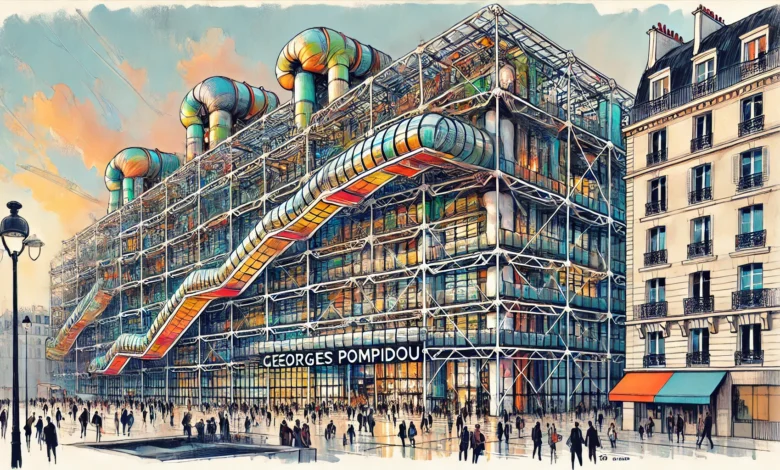
Pompidou Centre by Renzo Piano: Paris’s Modern Icon
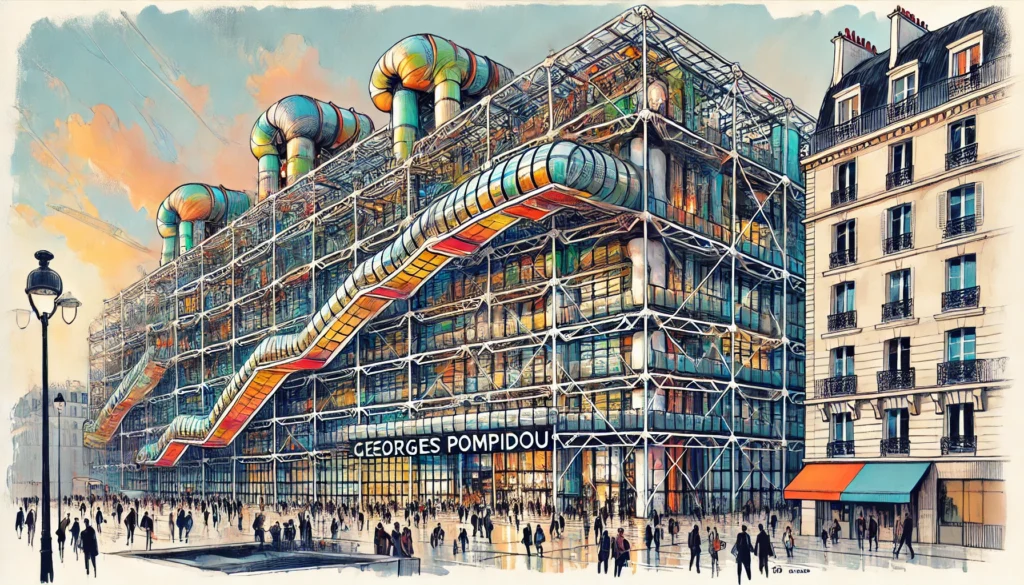
The Centre Georges Pompidou by Renzo Piano, nestled in the heart of Paris, stands as a beacon of modernity and innovation. Since its opening in 1977, the building has captivated the world with its radical departure from traditional architectural norms. Designed by the renowned architect Renzo Piano, in collaboration with Richard Rogers, the Centre Georges Pompidou by Renzo Piano not only redefined the architectural landscape of Paris but also became a symbol of cultural revolution. Housing one of the largest collections of modern and contemporary art in Europe, the Centre Pompidou is more than just a building—it is a cultural landmark that has left an indelible mark on the world.
Explore more of our articles on iconic modern architecture, where we delve into other groundbreaking designs around the world.
Design Philosophy and Architecture
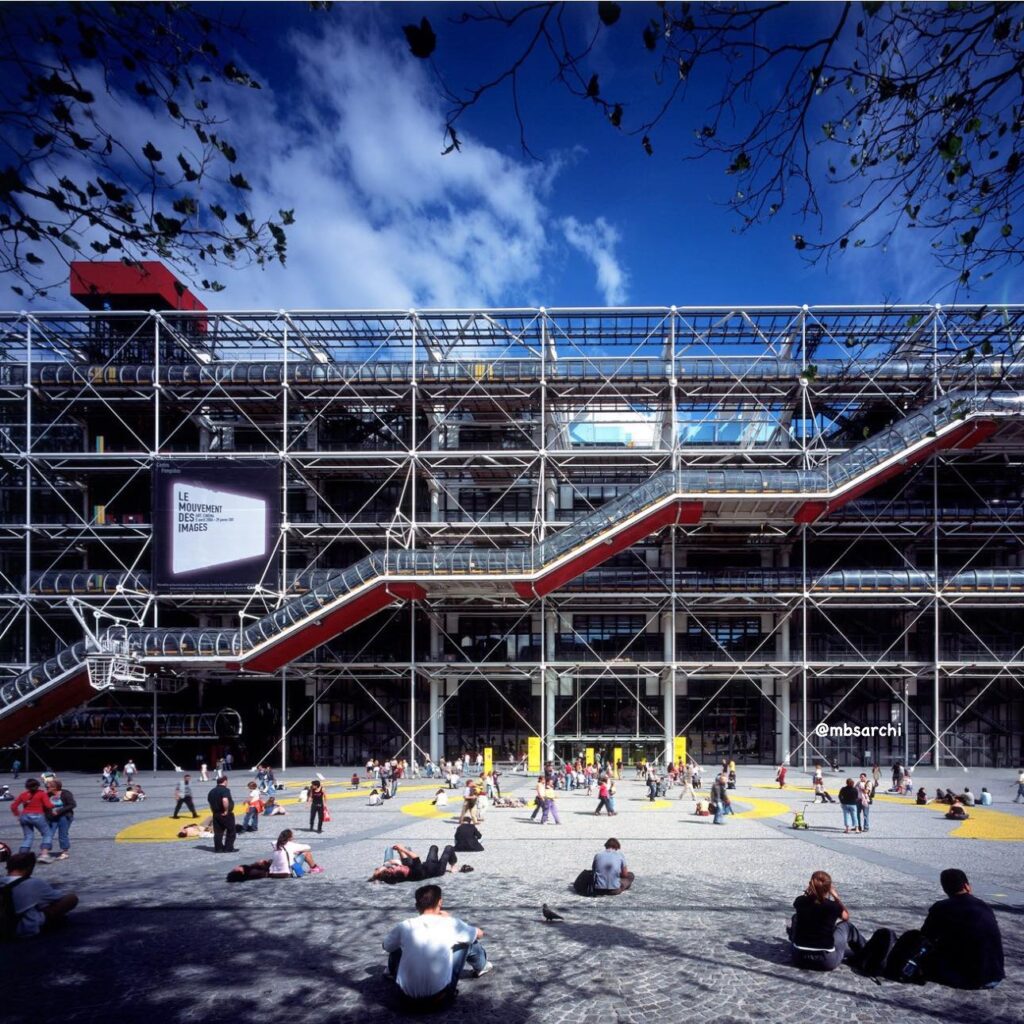
At the core of the Centre Georges Pompidou by Renzo Piano‘s design is a bold and innovative concept that challenges conventional architecture. Piano and Rogers envisioned a building that would be turned inside out, with its structural elements, mechanical systems, and circulation exposed on the exterior. This “inside-out” approach was revolutionary, as it defied the traditional notion of hiding a building’s functional elements. Instead, the Centre Pompidou proudly displays its colorful pipes, ducts, and escalators, transforming them into design features.
The color-coded elements add a layer of visual complexity to the building: blue for air conditioning, green for plumbing, yellow for electrical systems, and red for pedestrian movement. This vibrant palette not only enhances the aesthetic appeal but also clearly communicates the building’s functionality. The use of industrial materials such as steel and glass further emphasizes the modern, almost futuristic character of the Centre Georges Pompidou by Renzo Piano, making it a standout in the historic cityscape of Paris.
Cultural Impact
Since its inception, the Centre Georges Pompidou by Renzo Piano has played a pivotal role as a cultural hub in Paris. The building itself houses the Musée National d’Art Moderne, which is one of the largest and most significant museums of modern art in the world. This makes the Centre Pompidou not just a place of architectural significance, but also a vital cultural institution.
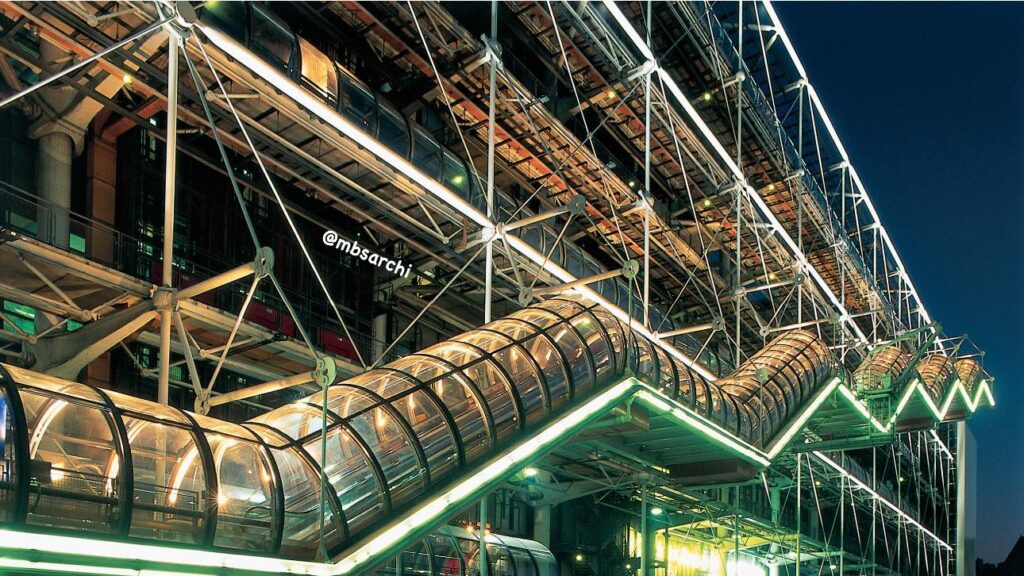
The building’s open and flexible design has allowed it to serve multiple purposes, from art exhibitions and cultural events to research and educational activities. Its vast public spaces, both inside and out, encourage interaction and engagement, fostering a sense of community. The Centre Pompidou has thus not only transformed the architectural landscape of Paris but has also significantly contributed to the city’s cultural and intellectual life.
Renzo Piano’s Vision
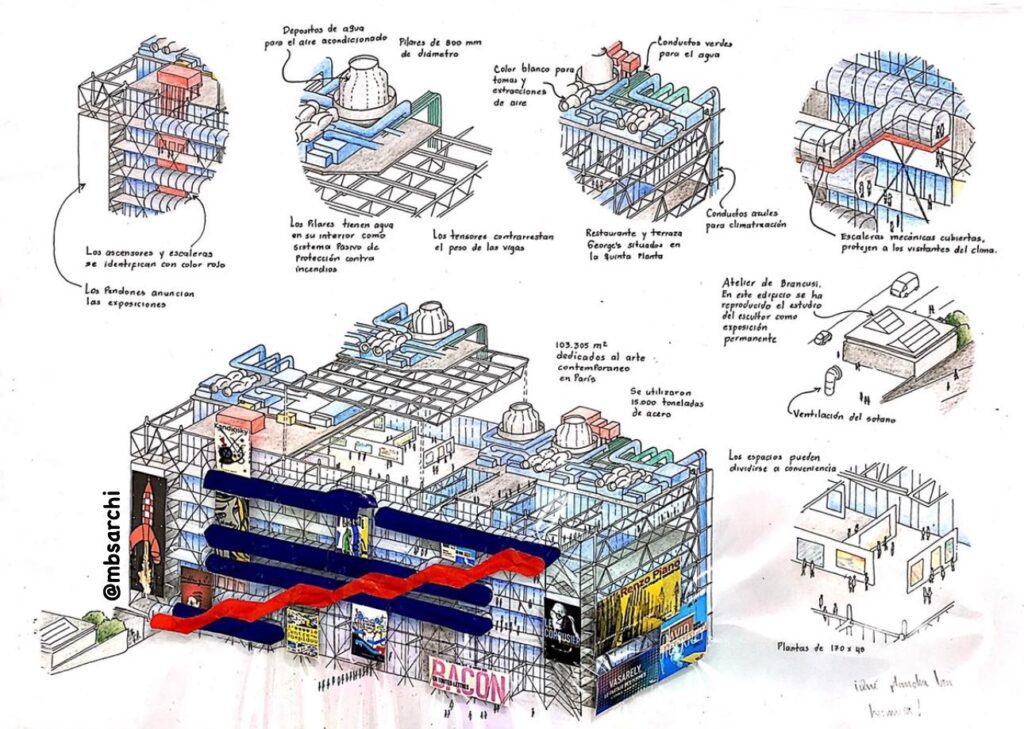
Renzo Piano’s vision for the Centre Georges Pompidou was deeply rooted in the idea of accessibility and transparency. He wanted the building to be a place that welcomed people from all walks of life, a place where art, culture, and people could converge. The collaboration with Richard Rogers was instrumental in bringing this vision to life. Together, they sought to create a building that was not just for the elite but for everyone, a building that was as much about the people as it was about the art it housed.
Piano’s approach to public space is evident in the vast plaza that stretches out in front of the Centre Pompidou, a space that has become a lively gathering spot for Parisians and tourists alike. This focus on public interaction is a recurring theme in Piano’s work, reflecting his belief that architecture should serve the community and enhance the quality of life. The Centre Georges Pompidou by Renzo Piano, with its transparent façade and open design, perfectly embodies this philosophy.
Public Reception and Legacy
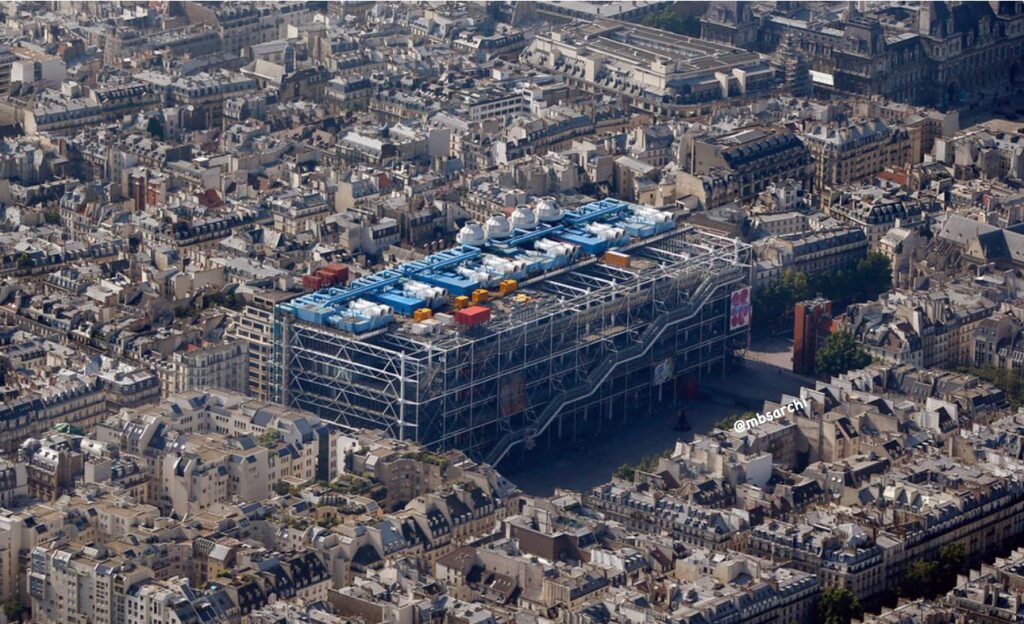
When the Centre Georges Pompidou by Renzo Piano first opened, it received mixed reactions. Many were taken aback by its unconventional appearance, which starkly contrasted with the classical architecture that Paris is known for. However, over time, the building has grown to be beloved by both Parisians and visitors. It has become a symbol of Paris’s willingness to embrace innovation and change, a testament to the city’s dynamic and evolving character.
Today, the Centre Georges Pompidou by Renzo Piano is recognized as one of the most important works of modern architecture. Its influence can be seen in the way it has inspired other architects to explore new ideas and push the boundaries of design. The building’s legacy lies in its ability to challenge perceptions, provoke thought, and inspire creativity—a legacy that continues to thrive more than four decades after its opening.

The Centre Georges Pompidou by Renzo Piano is more than just a building; it is a statement. Designed by Renzo Piano, it represents a bold leap into the future of architecture, where function and form are not just integrated but celebrated. Its impact on both the cultural and architectural landscapes is profound, making it a true icon of modern design. As we look to the future, the Centre Georges Pompidou by Renzo Piano will undoubtedly continue to inspire architects, artists, and the public, reminding us of the power of innovation and the importance of cultural spaces that are open, accessible, and alive.

Read about the Centre Pompidou’s architectural influence on ArchDaily.

